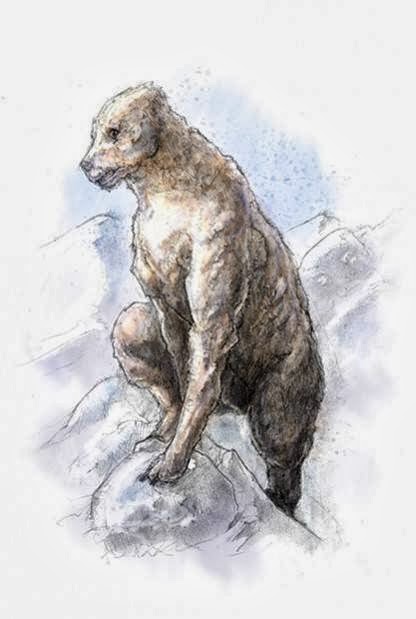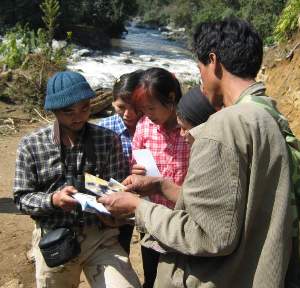
Clearly, in a surprisingly scientific and respectable fashion, Dr. Bryan Sykes appeared on the horizon in 2013 to forcefully engage the cryptozoology community. While the seeds were planted in previous years, this was the year Sykes wanted to have a far-reaching and profound discussion, regarding his Oxford University DNA studies.

Since the time of Edmund Hillary’s ill-managed 1960 examination of Yeti evidence in Nepal, there has been a need for a serious re-inspection of all the evidence for the wide variety of Yeti material from a number of types of Yetis. Into the void stepped Dr. Bryan Sykes a couple years ago.


Sykes told the cryptozoology researchers that he would work with them, if they would work with him. The man who first retrieved Neandertal DNA from ancient bone (Nature, 1989) had thrown down the challenge. After the fiasco of the Ketchem affair, many were careful, but eventually agreed to share hair samples with Sykes and his Oxford University-based study.

Globe-trolling with a crew from Channel 4/NatGeo to record the historically significant work he was doing, Sykes ended 2013 revealing some remarkable DNA findings regarding Yeti, Almas, and less so Bigfoot. He obviously had put in the effort scientifically, and he is 2013′s Cryptozoologist of the Year.

The media would misunderstand what Sykes discovered or even said about his Yeti samples. But the results from just two samples of hair (one from Ladakh, the other from Bhutan) indicated he had identified a surviving new species of bear that is a 100% match for a female mandible of an ancient (perhaps as old as 140,000 years) polar bear. Polar bears are a branch of the brown bears, so it is not a surprise that Sykes’ two samples were of brown hairs, that witness sightings are of a giant bearlike brown Yeti, and that Yeti researchers have figured a large, unknown bear accounted for one of the three kinds of Yetis.

But, of course, the news reports screamed that the Abominable Snowman mystery had been solved and that “Yeti is a Polar Bear” – sometimes with pictures of white polar bears. Both were incorrect media conclusions.



Sometimes the media seemed to be more a problem than a help in sharing some of Sykes’ statements. Take for example, this one:
Dr. Brian [sic] Sykes and his team at Oxford University carried out DNA analysis of presumed Yeti samples and thinks the samples may have come from a hybrid species of bear produced from a mating between a brown bear and a polar bear. Sykes told BBC News:
“I think this bear, which nobody has seen alive, may still be there and may have quite a lot of polar bear in it. It may be some sort of hybrid and if its behaviour is different from normal bears, which is what eyewitnesses report, then I think that may well be the source of the mystery and the source of the legend.”— Dr. Bryan Sykes, BBC News (17 October 2013)
Of course, note within this one alleged quotation Sykes is reported to have said “nobody has seen” this bear “alive,” but he is also noted as saying that “what eyewitnesses report” is “different from bears.” Was Dr. Sykes misquoted?


Bryan Sykes has been looking at one of the two samples for quite some time.
As I have mentioned here before and recently shared anew with Daniel Perez of Bigfoot Times, in the New Scientist on April 2, 2001, the following was published. It directly impacts on the Sykes’ samples:
Hairs found in a Bhutan forest could be those of the legendary Yeti, say makers of a TV documentary.
The cluster of hairs was found in a cedar tree by scientists who accompanied the documentary team. Sonam Dhendup, a local Yeti-hunter and guide, said the tree was the animal’s lair.
On returning to Britain, the team handed the hair to Oxford geneticists for analysis.
“It’s not a human, it’s not a bear, nor anything else that we’ve so far been able to identify,” says Bryan Sykes, professor of human genetics at the Institute of Molecular Medicine in Oxford.
“We’ve never encountered any DNA that we couldn’t recognise before, but then, we weren’t looking for the Yeti,” says Sykes, the first geneticist to extract DNA from archaeological bone specimens.
Sykes says that all other hairs handed in by the Yeti-hunting team were easy to identify, turning out to be pigs, for example.
An earlier, skin sample from Bhutan reputed to be from a Yeti was shown by Sykes to be that of a bear. But he is mystified by the hair sample. “We don’t know what it is; it’s behaving most peculiarly,” he says.
Rob McCall, an evolutionary biologist from the University of Oxford, reported finding scratch marks inside the cedar tree, which resembled claw rather than nail scratches.
McCall also discovered odd footprints just a couple of hours old. They revealed a short print with a narrow heel, plus toe pads rather than claws. Source.
While the documentary made of Sykes’ findings showed its quota of polar bear images, it also had an artist draw the following too. Some people did listen closely to what Sykes was saying.

Sykes’ forthcoming papers and new book, The Yeti Enigma, are cryptozoological literature we are patiently looking forward to read.

Bryan Sykes (born September 9, 1947) is a Professor of Human Genetics at the University of Oxford and a Fellow of Wolfson College. He is the Cryptozoologist of the Year 2013.
(As I go to post this, I have learned quite independently and separately Daniel Perez’s Bigfoot Times has named Dr. Bryan Sykes their “Bigfooter of the Year.”)
Recent Past Cryptozoologists of the Year:
Cryptozoologist of 2012: Cliff Barackman

Barackman’s grounded role model membership of the cast of Finding Bigfoot made him an easy pick for 2012. Photo courtesty: Animal Planet.
+++
Cryptozoologist of 2011: Mark Murphy

National Archives researcher Mark Murphy discovered papers detailing for the first time the United States government’s attention to the search for Yetis roaming the mountains of Nepal in the 1950s. Photo: Loren Coleman.
+++
Cryptozoologist of 2010: Ngwe Lwin

Ngwe Lwin asking local people for information about a little-known new primate species, the new Mae Hka snub-nosed monkey (Rhinopithecus strykeri), seen below, which he discovered. Photo: FFI.

Cryptozoologist of 2009: Gabriele Gentile

Italian researcher Gabriele Gentile holds a Galápagos iguana, a newly-verified pink and black species he discovered in January 2009. Photo: Gabriele Gentile
Cryptozoologist of 2008: Andrea Marshall

In 2008, after over five years of on-site work and confirming lab findings, doctorate candidate Andrea Marshall identified the giant manta ray as a distinctive new species, separate from the reef manta ray. She may have also found evidence of a future new, third species of manta.

Follow CryptoZooNews
Not Found
The resource could not be found.